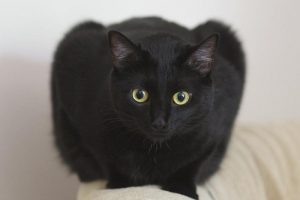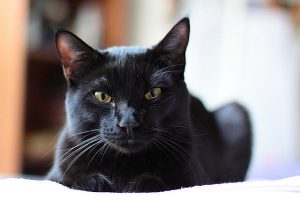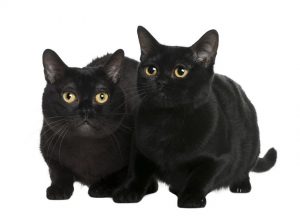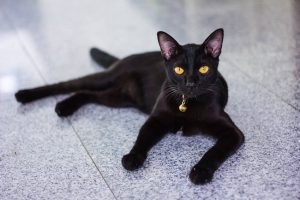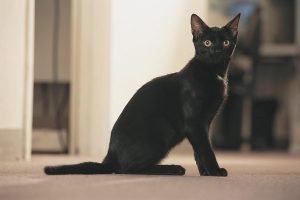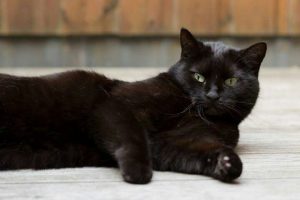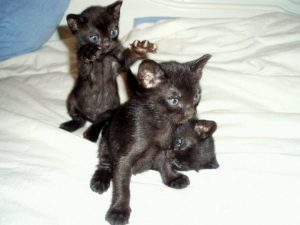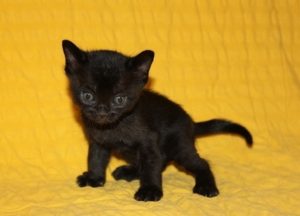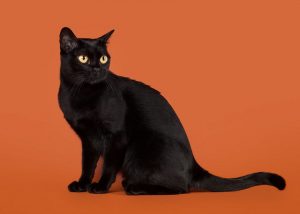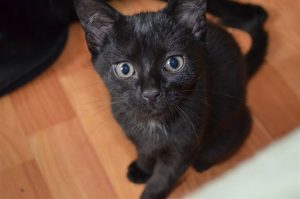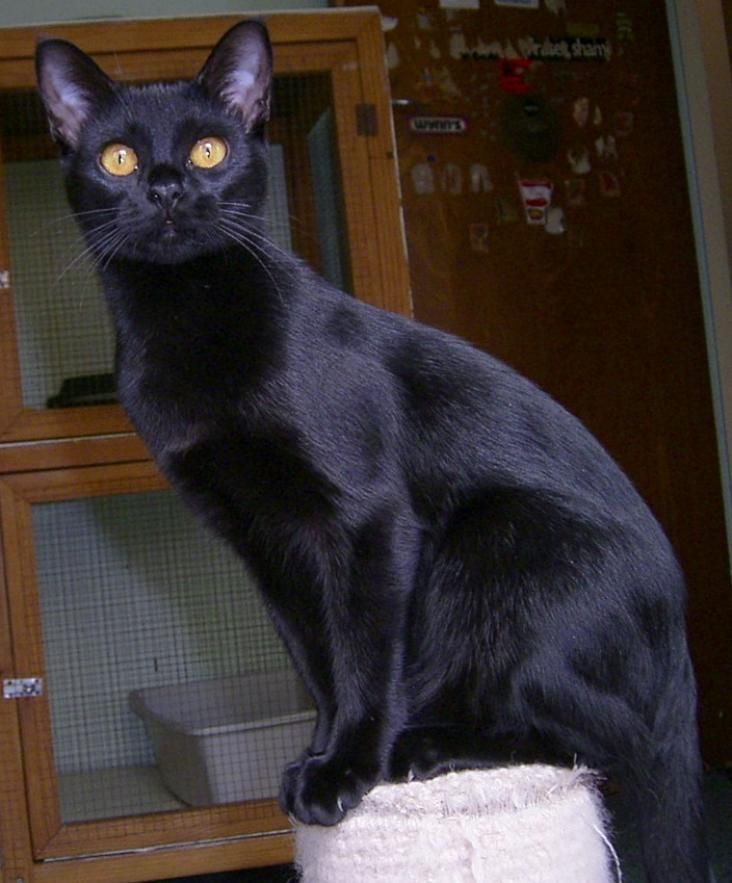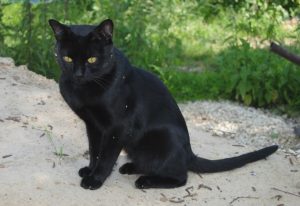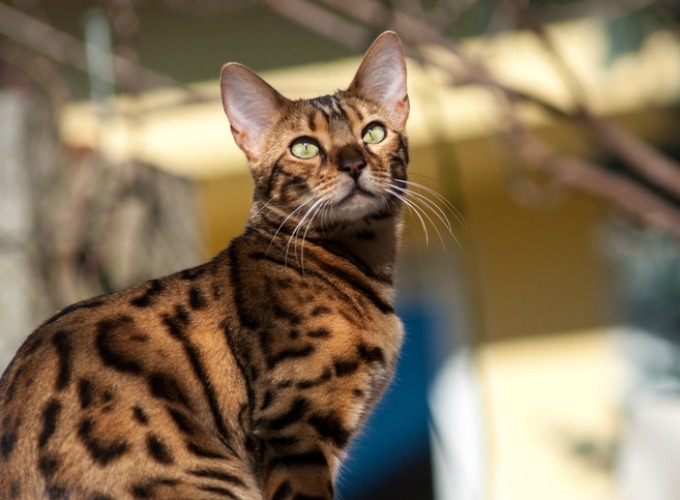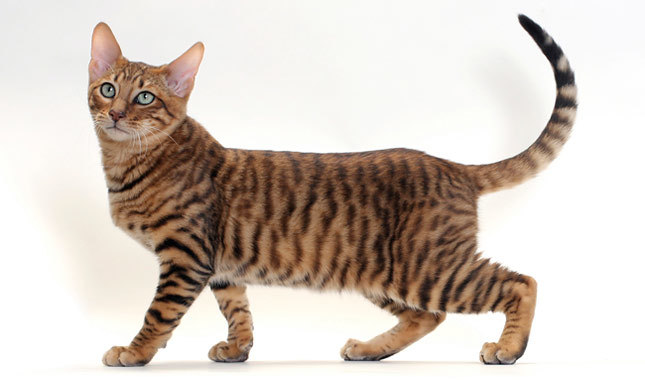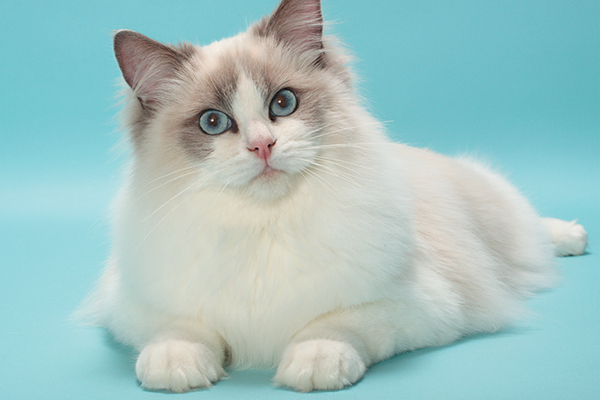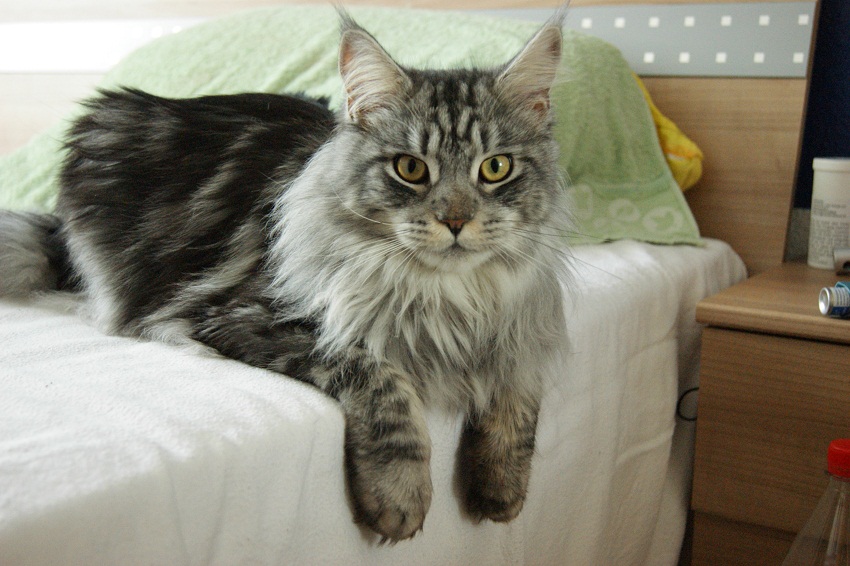A perfect example of a hybrid cat, the Bombay Cat is an outcome of breeding the American Shorthair (black) and the Burmese (sable). Bearing a striking resemblance to a black panther, this medium-sized breed with its cute, smart and mischievous disposition makes for a fantastic house pet.
Quick Information
Physical Appearance & Size
| Body Type: | Medium |
| Physical Appearance: | Muscular built; large round head; short muzzle; broad, curved, widely set ears; long legs and straight tail |
| Weight ( Size): | Male: 8 to 11 pounds Female: 6 to 9 pounds |
Colors & Patterns
| Coat Type: | Short, dense, smooth, sleek |
| Color: | Black |
| Eye Color: | British Bombay: Yellow, orange, green American Bombay: Copper or golden |
| Pattern: | Glossy and velvety |
Other Characteristics
| Lifespan/ Life expectancy: | 15 to 20 years |
| Behavioral Characteristics: | Curious, active, affectionate, intelligent, gentle, playful, fun-loving |
| Lap Cat: | Yes |
| Shedding (Do they shed): | Minimal |
| Vocalization: | Moderate to high, often resorting to increased crying and meowing particularly at night |
| Good with Children: | Yes |
| Are they Hypoallergenic: | No |
| Country: | U.S.A |
| Competitive Registration/ Qualification: | CFA, TICA, ACF, AACE, ACFA/CAA, CCA-AFC |
History
Nikki Horner, a Louisville, Kentucky breeder, is instrumental in developing the Bombay Cat in the United States in the latter half of 1950s. She intended to create a unique short-haired breed which would bear striking resemblance to a black panther. In order to put her thoughts into action, she crossed a male American short hair cat of black color with a female sable-colored Burmese cat. Though her first attempt did not come across successfully, she achieved her goal the second time in 1965. Attaining official recognition by the CFA (Cat Fanciers Association) and TICA (International Cat Association) in 1970 and 1979 respectively, these cats are still bred at present by crossing the sable-colored Burmese cats with the Bombays of the present time.
Their breed line developed in Europe when a pair of this breed namely Bagheera and Opium were sent to France.
However, in Britain, where they reached during the 1960s, they were developed by crossing the British Shorthairs and Burmese cats. In fact, the GCCF (Governing Council of Cat Fancy), grants the British Bombay the status of an experimental breed along with other cats belonging to the Asian group.
Temperament and Personality
- Has a sociable and affectionate nature, always yearning for the attention of the members of their family.
- Some of them have a special inclination towards only their owner or may be a single member of the household.
- Enjoys sitting on its caregiver’s lap when the latter is engaged in work and purrs affectionately.
- Detests when left alone for an extended duration.
- Are amicable to visitors, going up to the front door to welcome them.
- Seeks for warm shelters and may often snuggle into bed with their owner at night.
- Are of a talkative nature with their vocalization ranging from moderate to loud.
- Possesses a smart disposition, with some of them even adept at walking on a leash.
- Gets along well with children, also mingling comfortably with other cats and dogs.
- Has a versatile nature, adapting well in houses having a busy lifestyle.
- Finds ways to keep itself entertained, be it playing with his puzzle toy or fiddling with a plastic bottle.
Who is the Bombay cat good for
- Owners seeking for a gentle, loving pet who would be by their side always.
- Households where someone of the other would be present to keep them company.
- Families that would not mind a mischievous cat that would keep them on the run always.
- Those on the lookout for an intelligent feline whom they can teach a host of interesting tricks.
- People living in warmer places or having provisions for the cat to get sufficient heat even if they stay in cold regions.
Care
Since it sheds less because of its short, glossy coat, it has minimum grooming needs. Brushing it on a weekly basis using a rubber curry comb or rubbing its body with a chamois, helps in removing dead hair as well as maintains the shiny texture of its coat. Other hygiene needs include brushing its teeth every week, as well as cleaning its eyes and ears using a soft, most cloth or even a cotton ball to ward off any infection.
Though healthy and hardy, the Bombay cat may suffer from eye ailments like excessive tearing, breathing problems due to its short muzzle, heart diseases like hypertrophic cardiomyopathy, sinus problems, and gingivitis. They also have the possibility of suffering from craniofacial abnormality, a disorder seen in Burmese cats where the head is deformed severely. This deformity mostly occurs in the newborn kittens which are in most cases euthanized to save buyers from further hassles.
Training
These intelligent and smart cats are a marvel to train. Since walking on a leash is a mere cakewalk for it, you can teach your pet further to brush its skill. Choose a walking jacket for your cat rather than a collar which you may use for your dog. Make it adapt to the harness or leash and then get it walk around the house wearing the leash. Gradually take it out, initially in your garden and then on the road. Reward it with its favorite treat for every successful milestone it crosses.
What does a Bombay cat eat
Besides selecting a high-quality cat food, include cooked chicken, beef or turkey as a part of their diet to make up for the protein content. Moreover, cooked whole grains, canned fish, vegetables like broccoli or cucumber should also be a part of their diet to meet their vitamins, minerals and calorie requirement. However, control the amount of food you give it as overeating may lead to health problems.

